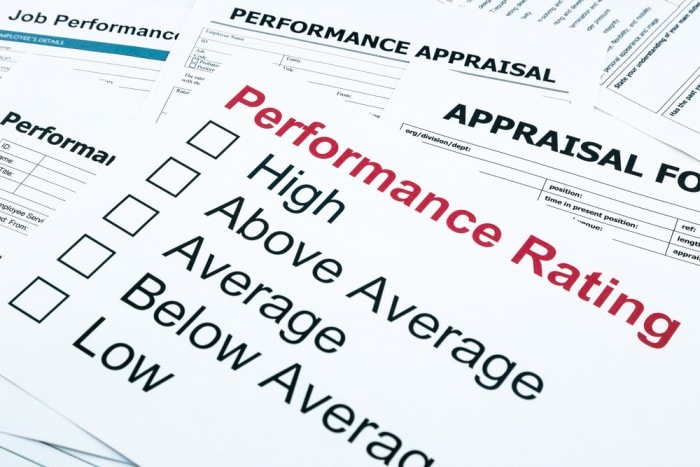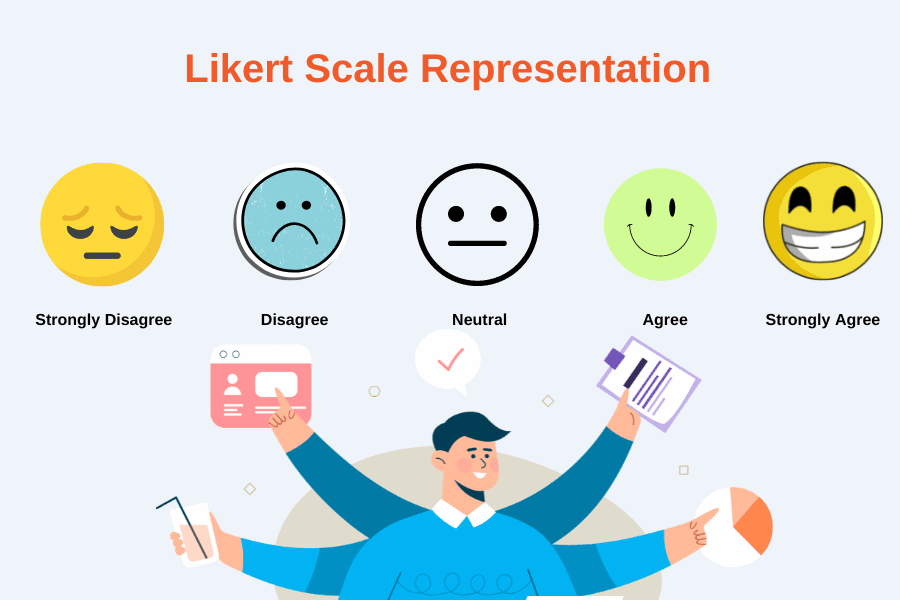Measuring employee’s performance is an inevitable part of assessing business health. Since employees are a business’ most valuable asset, it is imperative to ensure that individuals and teams achieve their full potential with adequate support and development opportunities. It is the key performance indicators (KPIs) that work as useful metrics to benchmark the progress. Put in the best KPIs in the business evaluation system to check employees’ effectiveness and level of productivity.
KPIs make everyone accountable for their performance. The KPI system helps employees measure their impact on business work, daily activities and how they affect the foundation of the role. Such a program contributes to the long-term success of the organization. KPI for performance evaluation would set the team and individual on the right track.
What do you understand about the Key Performance Indicator (KPI) and how to use it for reviews?
KPI is a way to quantify employee performance in an organization. The metrics are used to track employee productivity and to manage the team based on the requirements at work. It is critical to monitor and assess performance in a timely manner, but finding details about one’s duties proves to be a challenge.
This demands the use of the latest methods for developing KPIs for employees. Successful leaders should plan and adopt effective evaluation techniques for suitable results. Therefore, a lot of companies deploy KPI systems for performance reviews based on valuable insights. If you measure the value of employees with profit margins, it will give inaccurate and ambiguous results on productivity and performance.
Performance evaluation includes both qualitative and quantitative elements to get an appropriate outcome and includes more than just one’s past performance. However, one can get qualified data only by using KPIs to motivate a team. Once you find a person’s potency, you can assign tasks accordingly for the most effective results. The performance review will help in better understanding what motivates an employee and identifying weak points.
Using performance evaluation, pricing policy, project management, team management, and other elements allows identification of problems early on. However, KPIs help evaluate payroll operations when salaries of employees reflect the performance potential of an individual.
What metrics help measure employee performance?
KPIs alone cannot be used to evaluate an individual’s performance. Performance appraisals are based on both qualitative and quantitative feedback from managers, which is more than just productivity. An employee’s worth cannot be solely determined based on KPIs, and it extends beyond that.
Employee KPIs are high-level markers that show the level of employee productivity. It allows businesses to identify their potential and assign tasks to individuals or groups. This would help one focus on operational issues, having smooth workflow and resource availability.
1. Review the participation rate
Performance reviews are difficult to maintain regularly and take a lot of time. One of the primary benefits of deploying a people enabled platform is its flexibility and focus on user experience. Some of these are:
- Edit reviews for sick or absent employees
- Users can access and complete it on their own using its web version or app
- It saves drafts, allowing one to pick where they left
With better user experience, you have to encourage clients to set goals for work completion. Analyze how organizations can benefit from this performance management program.
2. Efficiency of HR process
Switching from the traditional paper-based review method to the latest user-enabled platform saves time for HR to process and report results. Meanwhile, managers and employees can participate in the review and use the platform easily. As a result, long-term goals can be achieved and in a timely fashion.
3. Quantity of feedback exchanged
As managers share real-time feedback with their employees or teams, it helps clarify expectations, share advice and celebrate achievements. Not all employees manage to get feedback once a week, though real-time feedback can help them improve at a greater scale.
It is not just a manager feedback that boosts engagement. Managers can help teams develop new habits. Management should set a feedback goal for better results. If giving continuous feedback is new to your company, set a goal to share feedback with at least one member of the team and slowly improve it. With this, track how often you give feedback and how it affects individuals and motivates the entire team.
4. Quality of feedback
A performance management tool can facilitate the feedback experience. It helps management learn how to give feedback to achieve the most effective results. Measure the effectiveness of feedback, and include surveys on how employees found it valuable and helpful. Set a goal and work to improve the quality of feedback based on the positive response.
5. Check on employee net promoter score (NPS)
If you wish to enhance employee engagement, focus on measuring feedback and plan for quarterly surveys. Prepare a set of questions and invite both positive and negative responses. Use the survey data to make the company a better place to work and help employees perform better.
Choosing and tracking KPIs
Are you unsure whether the company has deployed the appropriate KPI? Being a team leader, it is a common instinct to find out how the team is performing. Here, a positive KPI is enough as an indicator to show that you are sailing in the right direction. To pick the right KPIs to track performance and goals, you need to make sure they are related to the performance metrics.
- Is the goal quantifiable?
The performance metrics should be easy to evaluate and quantify. If you tell someone, ‘to be more positive’, it can be difficult to quantify. Instead, try setting goals based on KPIs that can be easily measured and objectively.
- Is the goal aligned with business objectives?
One should be careful when deciding on KPIs, as they should align with business objectives. If an objective is to offer customer satisfaction, KPI should also measure how much time it takes to resolve a problem raised by a customer.
- Can employees get a realistic impact from KPI measured?
The level of realistic impact for measuring KPIs mostly depends on the way a service is offered at the employee’s end. The solution depends on several factors, including how a problem can be resolved by a single person or whether it requires several steps.
- Is KPI relevant to a person’s role?
Not every employee should have the same metrics to measure the KPI, as it differs from one employee to another. When deciding on KPI for a team, it should be aligned with the role of each employee of the team.
To build an efficient KPI system, change the way of tracking elements and improve them. Try to create quarterly reports to track employees’ progress towards goals. It helps understand whether performance is declining, improved, or stabilized. Employees experiencing stagnant performance should seek new challenges and contribute effectively to business growth.
How to set organizational KPIs to assess performance?
Organizations should carefully choose KPIs to measure activity in the critical business areas. A satisfactory KPI for performance review should be built on customer surveys using the right data. The satisfaction score will help you decide how much to contribute to achieve the benchmark. No matter what the nature of KPIs are, they should be measurable, achievable, specific, relevant and time bound so that they give correct results. Measure metrics that are aligned with a business’ strategy and vision and help it reach its goals.
Use KPIs for development and recognition
If you want meaningful KPIs for performance reviews, keep the team motivated with the help of incentives and training. It is important to measure employee recognition and rewards based on KPIs.
For instance, if your goal is to attract new customers, KPI should be set to measure how many new customers you gain in a week. Based on this, build a performance system to reward employees effectively.
If you are using formal performance measures for managing performance, it should be accompanied by tips on effective leadership and inspiration for a team. Thus, KPIs can be used to measure any area of performance and should align with the strategic direction of the company.
KPI and performance management
Besides performance, managers must set objectives and targets that can be achieved by each individual and team. But how to measure performance and understand how much effort one puts into achieving goals? This is where performance management can help and understand who is working harder and who is not. Does the work to achieve the level that the organization requires maintaining? Key performance indicators help measure these by quantifying the performance level of an individual and a team. Check the goals and based the evaluation on the KPIs to get effective answers on each and work on the weak organizational areas.
What are the elements included in the KPI process?
The key elements of employee measurement for business success are:
- Describe the intended outcome
- Understand the alternative options to be taken
- Select the right measure for objectives
- Define the complex indices as required for business functions
- Set targets and path to achieve them smoothly
- Define and list the effective performance measures
How to develop KPIs for employee performance reviews?
No matter which industry you work in, managers look for competency in the right places. This is when managers will look at whether employees can meet goals, effectively contribute their part in a team, and apply critical thinking to ensure successful business operations. Although there are many key indicators, critical business operations should be the primary focus.
Teamwork
Colleagues who are working in a team actively participate and brainstorm ideas for the group. Taking part in different team projects, sharing ideas among team members and deciding on approaches often contribute to the success of the project.
Communication
An employee should know appropriate, accurate and professional communication in business and one should communicate, keeping in mind:
- Have the habit of concise and clear verbal communication
- One should be responsive to managers and colleagues
- Do timely follow-up via mail or for customer enquiry
- Try to articulate concepts and feedback accurately
Customer Service
No matter what your role is, you directly or indirectly help customers and, in any critical situation, employers will reach out to you for answers. Here, one should ensure they can handle the problem and not delay it, give timely responses to the customer, and offer adequate solutions to customers as required.
Track performance metrics, set goals, reduce turnover, and try to improve performance. By establishing these, it helps the team clearly understand where they stand and what it will take to reach the goals. Having clearly defined business goals will help set KPIs for thorough employee performance reviews.
Want to know how Engagedly can help you manage your employees better? Request a live demo from our experts!
Request A Demo












![Do’s And Don’ts Of Giving Negative Performance Reviews – [Infographic]](https://engagedly.com/wp-content/uploads/2017/12/HeaderDosAndDonts.png)








